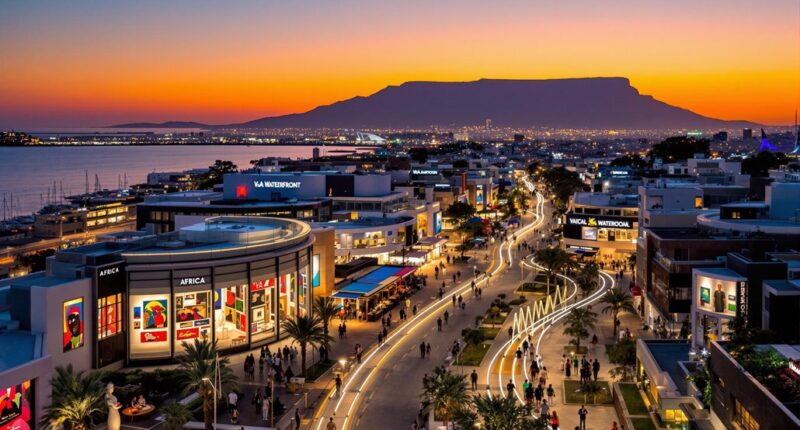Cape Town has emerged as Africa’s art capital, outshining cities like Johannesburg and Lagos. Foreign visitors drive up to 70% of gallery sales, with the Investec Cape Town Art Fair attracting approximately 30,000 attendees as the continent’s largest art event. Private museums like Zeitz MOCAA and the Norval Foundation showcase African artists to global audiences. Despite pandemic challenges, the city’s art scene continues to thrive with street art, museum exhibitions, and economic growth fueling this creative revolution. The full story reveals surprising economic impacts.
Cape Town has emerged as Africa’s undisputed art capital, outshining cities like Johannesburg, Lagos, and Marrakesh with its thriving creative scene. Foreign visitors are the main driving force behind this success, accounting for up to 70% of sales in galleries and art events. The city’s unique blend of cultural heritage, stunning landscapes, and world-class facilities has created a perfect environment for the arts to flourish.
The Investec Cape Town Art Fair stands as the continent’s largest, hosting 60 galleries in 2020—nearly three times more than competitors in Johannesburg and Lagos. This impressive scale attracts international collectors who seek contemporary African art. Major auction houses including Strauss & Co and Aspire Art Auctions have also expanded their Cape Town operations to capitalize on the growing market.
Private museums have played a vital role in this arts revolution. The Zeitz Museum of Contemporary Art Africa (MOCAA) and Norval Foundation have established themselves as institutions with greater weight than their Johannesburg counterparts. These venues showcase diverse African artists and provide platforms for emerging talents to gain international recognition.
Cape Town’s private museums have redefined African art, elevating local talents to global prominence through world-class exhibition platforms.
Street art has become a significant part of Cape Town’s creative identity. What began as a tool of resistance during apartheid, exemplified by the historic District Six mural depicting forced removals, has evolved into a tourist attraction and community asset. Artists like Faith47 and Mak1one have gained international recognition for their distinctive styles that blend political themes with traditional African aesthetics. The International Public Art Festival in Salt River now draws artists from around the world to create large-scale murals that blend local and global influences.
Despite recent progress, the creative sector faced severe challenges during the pandemic. Although South Africa allocated 150 million rand for arts relief in 2020, many freelancers—who make up about 70% of the arts workforce—encountered barriers accessing support funds. This crisis prompted new organizations like Women in Arts (WIA) to emerge, addressing both economic marginalization and gender-based violence within the industry.
Cape Town’s broader economic landscape supports its art scene. With 30 property developments worth R7.28 billion in 2023 alone, the Central City continues to expand. The Western Cape generated 78.9% of net new jobs in South Africa between 2019 and 2023, creating a robust ecosystem where the arts can thrive.
The creative economy itself is evolving, embracing new technologies including AI-generated art. A comprehensive study titled “The South African Art Market” conducted by Corrigall & Co provides valuable insights into pricing patterns and market trends across the country’s gallery landscape. Meanwhile, cruise liner tourism has rebounded to 70 ships in 2023, bringing art-interested visitors to the city. Despite funding challenges and shifting priorities among donors, Cape Town’s art scene continues to innovate and adapt, cementing its position as Africa’s premier creative hub while generating significant economic benefits for the city and its residents.
Conclusion
Cape Town’s art scene is booming thanks to 30,000 visitors who’ve pumped money into local galleries and studios. Artists are selling more work, hotels are full, and restaurants are busy. This growth is creating jobs and putting the city on the global art map. Officials hope this trend continues, making art a key part of Cape Town’s economy for years to come.






